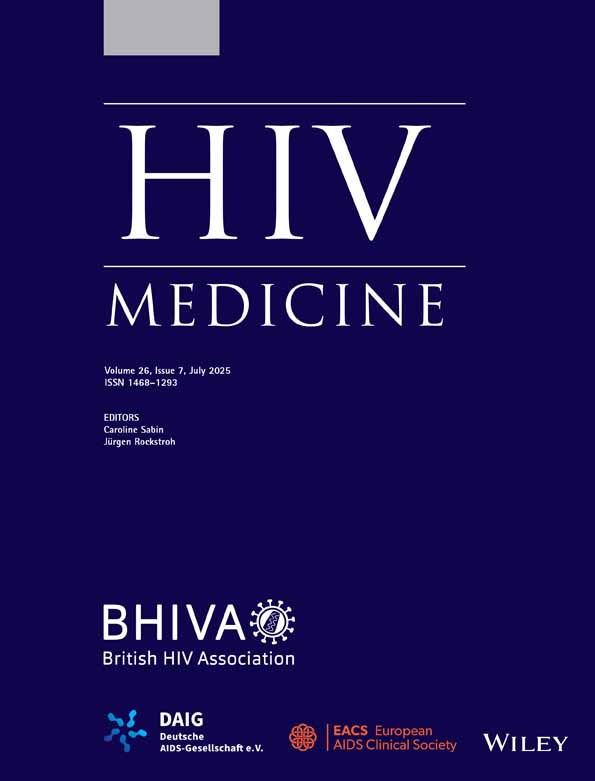Efficacy of long-acting cabotegravir plus rilpivirine in viraemic people living with HIV: A systematic review and meta-analysis
Abstract
Background
Long-acting cabotegravir/rilpivirine (LA-CAB/RPV) is currently approved as a switch strategy in people living with HIV virally suppressed on oral antiretroviral therapy. Although small reports on specific, difficult-to-treat populations demonstrated the efficacy of LA-CAB/RPV in people living with HIV and unsuppressed viraemia, cumulative data on this issue are still lacking.
Methods
We conducted a systematic review and meta-analysis based on PRISMA guidelines using PubMed, Scopus, Google Scholar and Medline, including papers or abstracts that evaluated the use of LA-CAB/RPV in viraemic people living with HIV. Two papers were excluded as they reported only single clinical cases; one study was excluded for including only three perinatally infected subjects. Two papers were reviews and two papers and one abstract reported result from Ward 86, which were later included in a final paper. One paper presenting preliminary results from the OPERA cohort was excluded, as these data were subsequently updated. The ACTG LATITUDE (A5359) study was not included, as it did not specifically report outcomes for people living with HIV who initiated LA-CAB/RPV while viraemic. After applying these selection criteria, five papers and three abstracts were included in the meta-analysis. The main outcome was virologic success, as defined by each individual study, in people living with HIV with at least one HIV-RNA evaluation after initiating LA-CAB/RPV. We did not perform a meta-analysis on other variables due to inconsistent assessment across studies.
Results
Overall, 244 people living with HIV started LA-CAB/RPV when viraemic. Most of them reported adherence, psychological or social issues that limited compliance to standard oral treatment. The cumulative probability of achieving virologic success was 87% (79%–95%). Most patients maintained adherence rates above 90% to their scheduled injection visits. Eleven patients living with HIV developed RPV-associated mutations and five CAB-associated mutations at virologic failure. No interruption of LA-CAB/RPV for adverse events was reported.
Conclusions
This is the first meta-analysis that assessed the efficacy of LA-CAB/RPV in viraemic people living with HIV; oral treatment efficacy was jeopardized by low compliance due to adherence or psychological issues. Our results can justify the use of LA-CAB/RPV also in viraemic patients without alternative oral options.
CONFLICT OF INTEREST STATEMENT
The authors declare no conflicts of interest.
Open Research
DATA AVAILABILITY STATEMENT
The data that support the findings of this study are available on request from the corresponding author.




